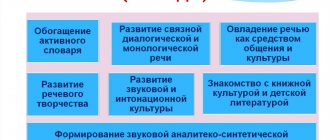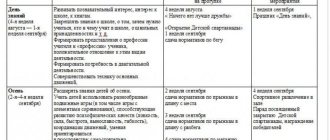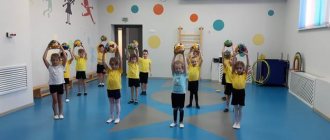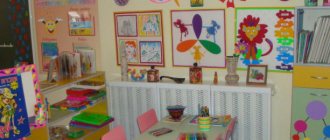MISTAKES OF PARENTS AND TEACHERS
The main mistake parents make when moving to a preschool is trying to influence the child without paying attention to the obvious demonstration of negative reactions.
Many children are literally brought to the kindergarten by force - in tears and hysterics. For a child, such circumstances become psychologically traumatic.
Most parents are seriously busy with work, but this is not a reason to show disinterest, not communicate with the child on the way home, or not ask about the day spent in the garden.
Kids want and need:
- share emotions;
- experience;
- receive approval from others.
The teacher must find an individual approach to each child, because subsequently the teacher becomes a second mother for the children, a significant adult to whom they can always turn for help.
If a child is aloof and uninitiative all day, it is important to give him special attention. The fundamentally important task of any teacher is to tirelessly monitor the behavior, mood, and well-being of each child.
A negligent attitude towards their physical or mental health can provoke the development of serious disorders.
Age in 1st junior group
1st junior group - these are special development conditions for children 2-3 years old. In accordance with the age characteristics of children, optimal conditions are created here for their prosperous, comprehensive, harmonious development - new types of activities and special classes are being introduced that have both a practical orientation and contribute to the formation of higher mental functions.
Each kindergarten student goes through 3 stages of adaptation to new living conditions.
The first stage is the most difficult for both the child and the parent.
Kids become capricious and whiny. They do not want to part with their usual way of life. Many rebel, try to defend their personal opinion, and refuse to comply with the proposed rules.This is a time of not only an emotionally unstable state, but also a weakening of the body. Children sleep restlessly, refuse to eat, and often get sick.
- Second phase characterized by instability. A self-confident, contented and seemingly well-adapted baby can return to his usual behavior for the first phase of adaptation tomorrow.
Children try themselves, determine their interests, and compare the environment at home with that provided by a preschool educational institution. The more successful the experience in the garden, the less likely it is that negative reactions to stimuli will occur.
- The third stage completes the adaptation process. The child’s psychophysical state is completely normalized, he readily accepts the fact of being forced to attend kindergarten, no longer protests or throws hysterics - he tries to find the advantages of being in the group, since there is no other way.
The duration of each stage of adaptation depends on the individual characteristics of the child, the efforts of the parents, and the teacher. If the baby is prepared in advance, finds himself in comfortable conditions with a friendly attitude from others, has the opportunity to do what he loves and is successful, the adaptation process will not take long and will not cause violent emotional reactions and other negative symptoms.
Features of a successfully completed process
When the child fully adapts to new living conditions, parents and educators can observe characteristic signs.
Among them:
- adoption of rules of conduct, daily routine;
- active interaction with others;
- prevailing good mood;
- absence of whims, tearfulness, aggression;
- inclusion in general activities;
- good health, normal sleep, healthy appetite.
An adapting child feels comfortable, this can be seen with the naked eye. The baby stops worrying and begins to enjoy visiting kindergarten.
Activities to help your baby
To help your child develop, you can include various games and exercises in his activities that will contribute to the formation of certain skills and abilities. Be sure to introduce outdoor games, combining them with educational ones. Remember that the baby is not yet ready to obediently sit at his desk and fulfill all your demands.
It is worth considering the following examples of games - most older preschoolers like them.
- "Basket".
Goal: develop thinking and expand vocabulary.
You tell your child that you are going outdoors and you need to collect a basket of necessary things. You can start listing them: water, sandwiches..., and the baby should continue. Use different variations of the game: pack a suitcase for a trip, a bag for a walk, a basket in a store, etc.
- "Smart Ball"
Goal: to develop logic, thinking, attention, coordination, memory.
To play you will need a ball. It is advisable for several people to participate. Choose a topic and name it - for example, transport. The presenter throws the ball, and the participants catch and name any vehicle known to them. Of course, this cannot be repeated. When your child or children begin to make frequent mistakes, switch to a different topic.
- “What’s superfluous here?”
Goal: development of abstract logical thinking.
It is necessary to offer the child several groups of objects (start with one, you can use pictures for this). These could be vegetables or fruits, dishes or toys - the main thing is that one item is superfluous. The child must understand which one. This is a rather difficult game for kids, so give some hints: “How can all these objects be called in one word?”
- “Who will the eagle catch?”
Goal: to develop attention and motor activity.
Several people must participate. At first there may be one eagle who will catch bunnies. Whoever gets caught becomes the next eagle. Then you can complicate the game by making several eagles and several bunnies.
- "Charades".
Goal: to develop imagination, logical and figurative thinking.
Usually animals are depicted in charades, but you can try showing objects. You can use pictures that you put in the hat. Children will take turns pulling out and showing the depicted object, and the rest must guess who it is.
- “Assemble our house.”
Goal: development of fine motor skills, imagination, assistance in forming an image of the family and oneself.
On A3 sheet or Whatman paper you will need to assemble an applique of the house in which the baby lives, maybe his room. Place family members there, including himself.
To do this, you will need either paints or images of various objects that can be cut out (sofa, bed, toy box, etc.), as well as your family photographs or their printout on A4 sheet, scissors or brushes. Let the child cut out all the necessary items and photos of family members. Next you will need to distribute them on whatman paper. For example, mom may be in the kitchen, dad in the office, the child is playing with toys, etc.
- "What changed?"
Goal: development, memory, attention, thinking, imagination, logic.
To do this, you will need two similar pictures, but one should contain some objects and details that are missing on the other. Show your child the first picture and ask him to remember what it shows. Then put it away and ask them to talk about this image. Ask leading questions that will help your child describe the picture. After that, show him the second one and ask him what’s new on it that wasn’t on the first one?
If your child finds it difficult to do this exercise at first, show both images at once and simply ask them to tell you how they differ.
- “Unite.”
Goal: development of thinking and logic.
You will need items of different colors and shapes. It is necessary to give the child the task of combining all the objects, for example, pink ones into one group, and white ones into another. The same with the shape: square to the right, triangular to the left. Then you can make it more complicated and ask them to put the triangular ones in a white box and the pink ones in a square one.
HOW DOES THE PERIOD GO?
Adaptation of children to nurseries goes through several periods, characterized by the severity of certain negative reactions.
- Acute phase. At the first stage, maximum mobilization of the child’s body is observed. The baby is constantly in an excited, tense state.
He is whiny, nervous, capricious, hysterical both within the walls of a preschool educational institution and at home.
In addition, physiological changes related to heart rate or blood pressure can be observed. At this stage, susceptibility to all kinds of infections and viruses increases.
- Moderately acute phase. The severity of negative manifestations noticeably decreases, the baby gradually adapts to the changed living conditions. There is a decrease in excitability, nervousness, improved appetite and sleep. However, at any stage of this phase, a resumption of negative emotions is likely - hysterics, tearfulness, reluctance to part with parents.
- Compensated phase. Characterized by stabilization of the mental state. The child successfully finds ways to interact with the teacher and peers and actively begins to learn new skills.
Adaptation cannot be avoided - it is the body’s natural reaction to changed conditions. Some children successfully cope with stress in a few weeks, while others remain in emotional stress for several months.
Tips and tricks for relief
First of all, the parent must mentally prepare the child for visiting kindergarten - tell him that there will be a lot of fun and interesting things there, that he will be able to make real friends, learn, and learn something new.
It is advisable to increase the time spent in the group gradually , trying not to leave the baby last when evening comes. During the adaptation period, it is important for the child to have some kind of reminder of home nearby - this could be a favorite toy, a memorable photo, or any other little thing associated with the parents.
On the way home after kindergarten, it is important to talk to your child - ask how his day was, what new things he learned, who he made friends with, what he liked. On weekends, you should give your child enough attention. It is also strongly recommended, if possible, to avoid transfer to another preschool institution, especially at the time of adaptation.
A teacher is an adult who has direct contact with children throughout the day. It is the teacher who must :
- tirelessly care for the well-being of every child;
- notice difficulties in a timely manner;
- help in overcoming them;
- provide appropriate assistance, support - offer different types of activities;
- encourage initiative;
- demonstrate ways to resolve conflict situations;
- be friendly.
Characteristic addiction problems
The adaptive capabilities of a young child are limited, so a sudden transition of a child into a new social development situation and a prolonged stay in a stressful state can lead to serious emotional disturbances.
Children aged 2-3 years are characterized by emotionality and impressionability .
They tend to quickly become infected with both positive and negative emotions and imitate the actions of others. Difficulties associated with adaptation at this age stage are due to age-related characteristics.
It is difficult to accustom children 2-3 years old to certain rules of behavior and to develop an appropriate attitude towards prohibitions. Kids diligently test the boundaries of what is permitted. Self-awareness appears - the child can understand that he is able to influence what is happening around him, therefore he shows will, wins back his independence, becomes more active and independent.
He begins to be interested in communication and games with other adults and peers. At the same time, the baby is faced with the first experience of interacting with a group, of being part of a team.
HOW TO BEHALF AS AN ADULT?
Both the teacher and the parent can contribute to a favorable adaptation to the nursery. Appropriate help and support can alleviate the psycho-emotional state of the child.
The main task of the parent is to prepare the baby in advance for visiting the nursery.
You cannot place a child in an unfamiliar environment just like that, without prior preparation.
- It is advisable to start the stay in a preschool institution with several hours and subsequently increase this time gradually.
- Parents are advised to teach their child all the rules of personal hygiene at home. This will make it easier for him to get used to the teacher’s requirements.
- It is advisable to develop a certain diet, give up snacks, and also instill skills in using cutlery. It is important to explain to the child that he needs to eat the whole portion - otherwise he simply will not have enough energy, and he will not be able to explain the physical discomfort he experiences.
- Daytime naps are an integral part of preparing to attend kindergarten, and you will also have to get used to this. Children sleep in nurseries because their leisure time is dynamic, rich, and varied. If a child refuses to nap at home during the day, you should take a more responsible approach to organizing your free time.
- Clothes and shoes should be comfortable and practical. The baby should not be afraid to get it dirty or wrinkled. Movements should not be constrained, and if necessary, the child should be able to take care of himself independently - it is advisable to abandon complex lacing, fasteners, and fastenings.
- You should be allowed to take with you to the nursery only those toys that he is ready to share and that he does not mind spoiling or losing.
We must not forget that deception, even due to a sharp change in circumstances, can become a very difficult truth for a child, shake his trust in his parent and negate all efforts to successfully adapt to the kindergarten.
The teacher also plays an important role in the child’s adaptation process. The quality of interaction with the baby and with the parents affects how the whole process will go overall and how quickly it will end.
In order for the adaptation to be painless, the teacher, first of all, needs to establish contact with the parents and agree that they bring the children at intervals of 10 minutes. This will allow you to meet each child and find a common language with him, making the process of parting with the parent easier.
It is important to establish trusting relationships with children so that they feel safe:
- show affection, kindness, interest;
- offer help;
- smile more often;
- tactile contact;
- involvement in group games;
- inquire about your mood and well-being.
The interior of the room should be cozy - decorative items, corners for privacy, a clean, soft carpet, a variety of toys.
DIFFICULTIES
Adaptation to new living conditions at an early age is complicated by age-related developmental characteristics. Children have not yet fully developed the mobility of nervous processes - they are less mobile, it is difficult to distract them or interest them in a new toy.
Not all children have time to master the methods of verbal interaction - therefore, they do not always correctly perceive the speech of an adult addressed to them. Kids cannot boast of experience communicating with different people; it can be extremely difficult to calm them down.
Division by specialization
At preschool educational institutions, teams are formed not only by age and time of presence. Groups of children are often divided according to specialization in kindergarten. As a rule, pupils of such units need research from specific medical specialists. Divided into the following:
- health or sanatorium-type groups - children who often get sick and have weakened immune systems attend. When visiting institutions, children are sent to physical therapy. The menu for them is developed individually. They are constantly provided with medical care and monitoring;
- speech therapy teams - the division is considered the most common. Such groups differ from ordinary ones only in that speech therapists systematically and purposefully work with them, solving problems and correcting speech;
Video: Does a child need a speech therapy group?
- groups with disabilities are heterogeneous in composition. Children with visual, auditory, and musculoskeletal disorders, as well as developmental delays, Down syndrome, and autism attend classes. The peculiarity of the educational process lies in the competent selection of teaching methods and technologies.
The division of preschoolers, as can be seen from the article, occurs according to several principles. The most common distribution is by age. But if the baby has any health problems or the parents cannot part with him for a long time, it is recommended to consider institutions where the children's team is divided according to specialization and length of stay.





